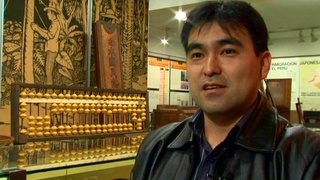Interviews
Ways of Fitting In
So growing up in this environment of friends who spoke English and we started speaking English, music, sports, going to the library. The school was providing the, part of the assimilation process -- a lot of it, not part. Much of it. Movies, all provided this input in becoming American. And so it was not only the schools and meeting these kids.
So when I walked to school, it was easy enough to become friends with non-Japanese because we talked about the latest movie you saw, the cowboy movies or whatever, and what we heard on the radio. Newspapers, of course, what little we read in the newspapers. So we became, because of our input from schools, et cetera, radio, it didn't take long for us to be a part of a, a larger group, yes, culturally but not socially, you know.
Date: February 18, 2002
Location: Washington, US
Interviewer: Alice Ito, John Pai
Contributed by: Denshō: The Japanese American Legacy Project.








